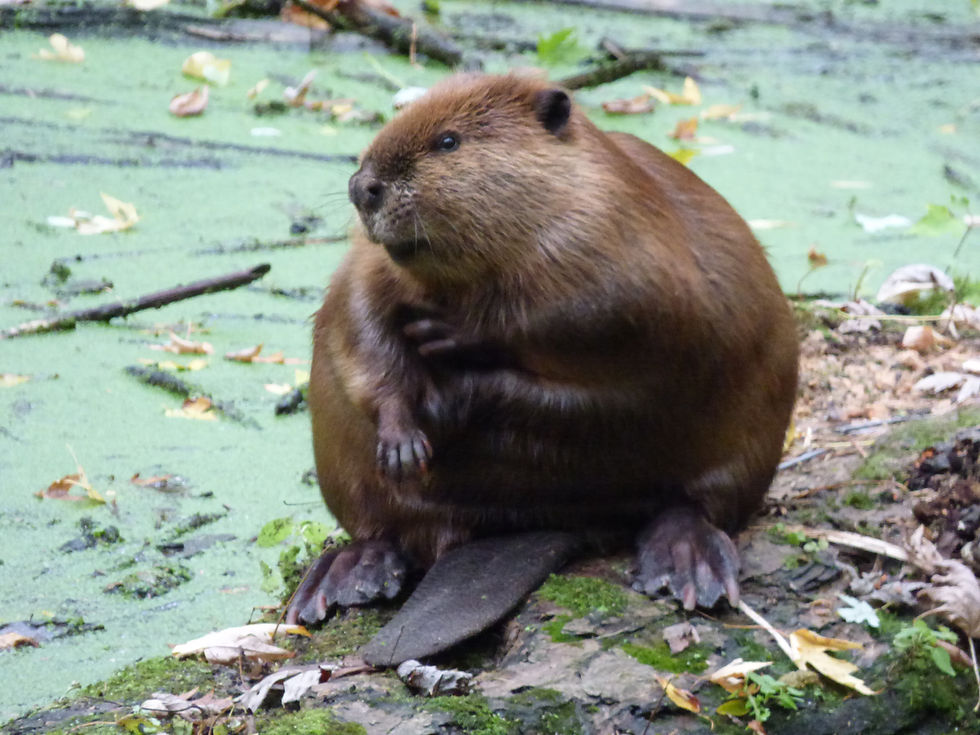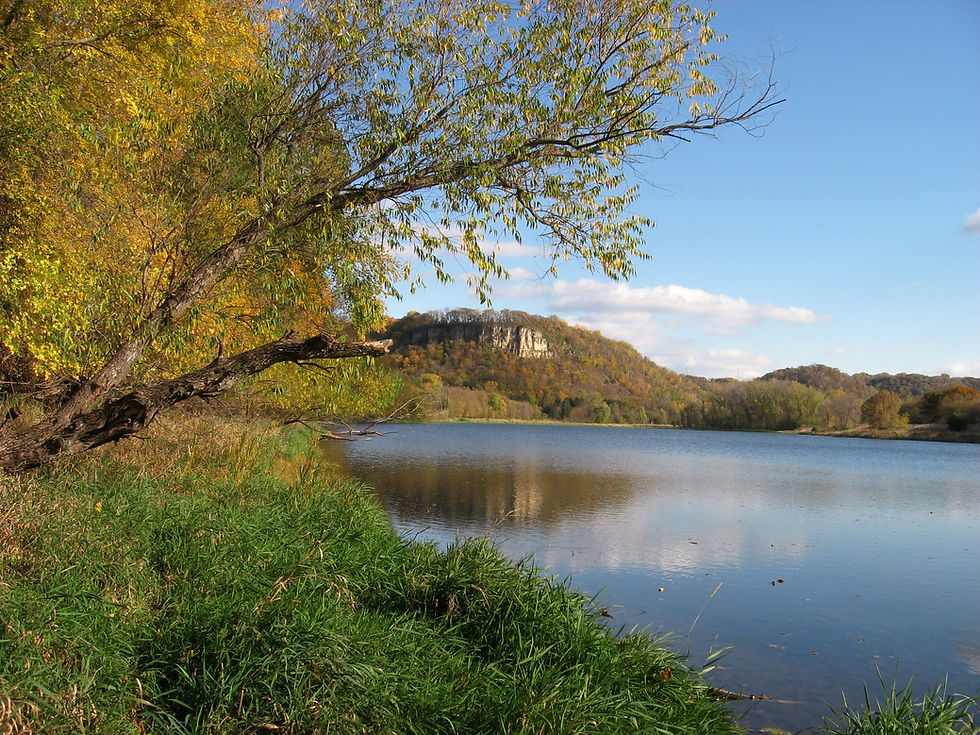"Fall Colors Later In Wacouta This Year"
- wacoutanaturenotes
- Nov 7
- 3 min read
On average, peak colors usually arrive around mid-October locally. However, due to a combination of the lingering effects of unusual summer conditions and a lack of a significant drop in temperatures, peak colors were at least a week later in 2025.

Here is the fall color scene from the top of Rattlesnake Bluff 300 feet above State Highway 61.

Here is the scene of Sevastopol bluff with the impressive Wacouta prairie in the foreground. It is hard to imagine the full recovery of this prairie after the prescribed burn this past spring. I have received numerous reports from folks walking on the trail of sighting up to 9 pheasants residing in the prairie.

During the spring and summer months, most of the food production necessary for tree growth occurs in the leaves. This process of photosynthesis takes place in the cells containing pigment known as chlorophyll.
As we head into the fall season with shorter periods of daylight and cooler night, the leaves respond by producing fewer carbohydrates and chlorophyll starts to deteriorate. Yellow pigments called carotenoids in these beautiful hard maples now become much more noticeable.

The colors on the north facing bluff were so much more vibrant than those on the south facing bluffs of Wisconsin on November 3.

With the river level for most of October below 3 feet, the impact on various wildlife varied.
Over the years, my last sighting of turkey vultures was October 15th. My last sighting this year was October 17th.
In my last post, I commented on all the white pelicans I had been observing at the lower end of Lighthouse Island. In recent years, with higher water levels and the start of the waterfowl hunting activity most pelicans started migrating by mid-October. Today November 3rd, there was still a flock of pelicans resting on that island. With the low water levels, fishing must still be good for these birds.
On the other hand, local beavers are facing a difficult situation going into winter. For their lodges to be safe from predators, the entrances must be underwater. With the current low water levels, that is not the case.

With the low water, beavers can still locate a food source quite easily. In this case, the bark from this fallen tree was quickly eaten.

The challenges facing beaver under the low water conditions are where can they build their feedpiles of branches for the upcoming winter? In more normal conditions, beaver establish the food supplies at the edge of their lodges. When hungry during the winter, they swim out from the lodge under the ice to bring food back into their living quarters. That is no longer possible.

With decreasing daylight by the first of November, whitetail deer enter the rutting season. To claim territories and prepare for future confrontations, bucks will spar with small saplings and leave their scent.

On Saturday morning November 1st, I received a phone call from a nearby friend, Brian Schreiber. Earlier that morning, Brian and his wife Grete while out for their morning walk on Ski Road, noticed some very unusual activity in their recently picked soybean field.
He asked me to come over and confirm his suspicions. There were three possibilities.
1. UFO activity
2. Given the fact this occurred the night after Halloween, maybe some prankster activity.
3. Evidence of quite the fight between two large bucks. Of all the time I have spent in the woods during the fall, I have never observed such a confrontation.




Wonderful pictures. Informative and artful. Your learned comments allow us to appreciate the Wacouta wonderland to its fullest. One negative is the continued extension of what you call Lighthouse Island. We call it Mud Island. In just a couple years the sedimentation has grown mightily. It's a battle the Lake Pepin Legacy Alliance continues to fight without real progress. Still, our work with the Corps of Engineers is useful. The Bay City project being a good example. Keep up your great observations. Marilyn and Arlin Albrecht
I like the possibility of UFO activity! What a sight the confrontation must have been to leave such a mess. Beautiful photo of the beaver. I hope they fair OK this winter. Thanks again, Bruce, for the wonderful information you provide. We tend to take our Fall colors for granted. Nice to know what's going on behind the scenes. Marty
Enjoyed the beautiful photos and interesting comments of fall in our beautiful Wacouta.